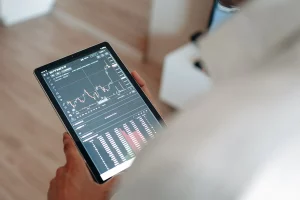
Leverage is a concept used to describe margin trading in financial markets. In simple terms, these are borrowed funds provided by a broker to a trader. The loan amount can exceed the client’s deposit amount by 10, 20, 100, or more times.
At the same time, the amount for which the trader carries out the operation, one’s own funds remain with the broker as collateral for the period of the open transaction. In this review, we will consider in detail what is leverage in Forex trading and how it expands the participant’s opportunities, allowing one to trade with a large lot.
Leverage Size On The Forex Market
The leverage is the ratio of the trader’s equity to borrowed funds; it can be 1:2, 1:3, 1:5. On certain instruments, the broker may be ready to lend 1:10. To get a loan, a trader will need to have a certain amount on the account, sufficient trading experience, or certificates confirming that they have skills in handling money and giving the right to receive such leverage. For the use of borrowed funds, a commission is provided, which is realized in the form of a swap when transferring an open position to the next trading day.
The situation in the forex market is different for different participants. If we talk about licensed players, then the amount of security provided by an individual and the number of one’s obligations cannot be less than 1:50 according to the law “On the Securities Market” in Forex. In offshore jurisdictions and forex brokers operating without a license, the standard leverage is 1:100. However, not many traders understand that high leverage implies comparable risks. On the one hand, it multiplies potential profits but may increase losses at the same time.
For example, a trader puts $1,000 on one’s account. When trading with a leverage of 1:100, or 100,000 units of the base currency, a trader needs $99,000 to open a position with one lot. The broker will add the missing part so that the client can make transactions in one lot. In this case, the maximum possible position to open is $100,000. But if the price deviates in the opposite direction by only 1%, the trader will completely lose the deposit, and trading will be terminated.
Possible losses of the broker are limited by the balance of the client’s trading account. If the loss reaches a critical figure, the broker will close all current positions by stopping out and thus will not allow the trader to lose more than the balance of client funds on the trading account.
How To Use Borrowed Funds Correctly?
With a reasonable approach, leverage is a good financial instrument since it allows a trader, to conclude large transactions and receive serious profits, to increase the deposit many times over in a short time. But do not neglect the rules for using such a loan, and here are the most important ones:
- Never trade with all the money, regardless of the size of the leverage. One transaction should account for 1–2% of the deposit amount;
- Set stop-loss levels. This will reduce the risks;
- It is not necessary to use the maximum leverage, it is better to trade a small amount of borrowed funds.
Benefits Of Forex Trading with Leverage
The popularity of trading with leverage is due to the presence of a lot of advantages of this type of trading:
- Minimization of invested capital. For the transaction, you need to pay not the full cost but only a small part of it. For example, if you open a trade for $3,000 with leverage of 1:400, you only need to invest $7.5 of your own funds.
- Availability of tools. If trading in some instruments is possible with a small starting capital, then investing in more prestigious assets costs a lot of money. With the help of leverage, such investments become more accessible. Now, you do not need to enter the market for these assets; you just need to play on the difference in rates, having secured leverage.
- Great responsibility for risks. Margin trading allows you to enter the market with little capital, but there is also a significant risk in this. The more you can earn on a trade — the more you can lose if the trade fails. Trading with leverage educates the trader by constantly reminding him of the big risk, so it will be faster to learn how to work with stop losses so as not to take a huge loss.
Conclusion
Summing up this review, it should be noted that leverage itself does not affect the level of risk in trading. It only affects the size of the position opened by the trader. Without leverage, profitable trading is quite possible. But if you need to use borrowed funds, the main thing is to remember the rules of money management.








